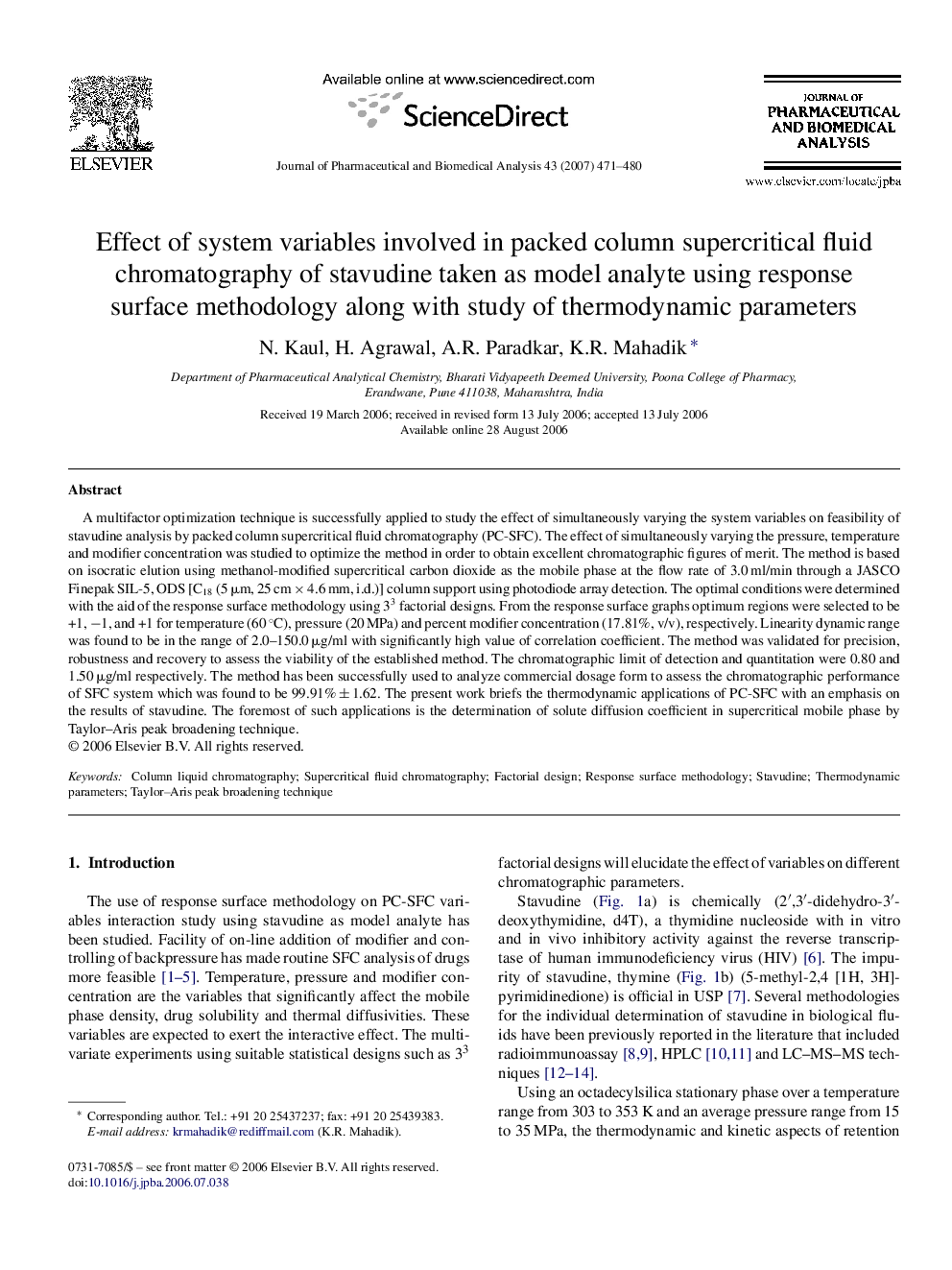| Article ID | Journal | Published Year | Pages | File Type |
|---|---|---|---|---|
| 1224346 | Journal of Pharmaceutical and Biomedical Analysis | 2007 | 10 Pages |
A multifactor optimization technique is successfully applied to study the effect of simultaneously varying the system variables on feasibility of stavudine analysis by packed column supercritical fluid chromatography (PC-SFC). The effect of simultaneously varying the pressure, temperature and modifier concentration was studied to optimize the method in order to obtain excellent chromatographic figures of merit. The method is based on isocratic elution using methanol-modified supercritical carbon dioxide as the mobile phase at the flow rate of 3.0 ml/min through a JASCO Finepak SIL-5, ODS [C18 (5 μm, 25 cm × 4.6 mm, i.d.)] column support using photodiode array detection. The optimal conditions were determined with the aid of the response surface methodology using 33 factorial designs. From the response surface graphs optimum regions were selected to be +1, −1, and +1 for temperature (60 °C), pressure (20 MPa) and percent modifier concentration (17.81%, v/v), respectively. Linearity dynamic range was found to be in the range of 2.0–150.0 μg/ml with significantly high value of correlation coefficient. The method was validated for precision, robustness and recovery to assess the viability of the established method. The chromatographic limit of detection and quantitation were 0.80 and 1.50 μg/ml respectively. The method has been successfully used to analyze commercial dosage form to assess the chromatographic performance of SFC system which was found to be 99.91% ± 1.62. The present work briefs the thermodynamic applications of PC-SFC with an emphasis on the results of stavudine. The foremost of such applications is the determination of solute diffusion coefficient in supercritical mobile phase by Taylor–Aris peak broadening technique.
